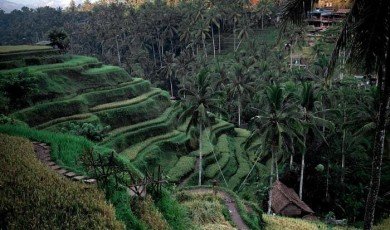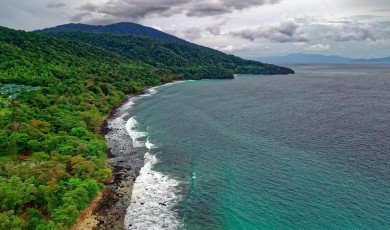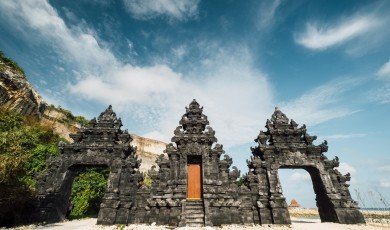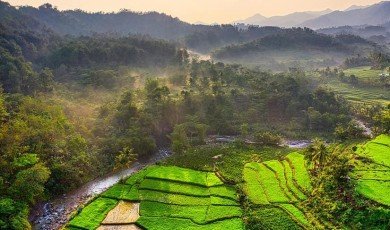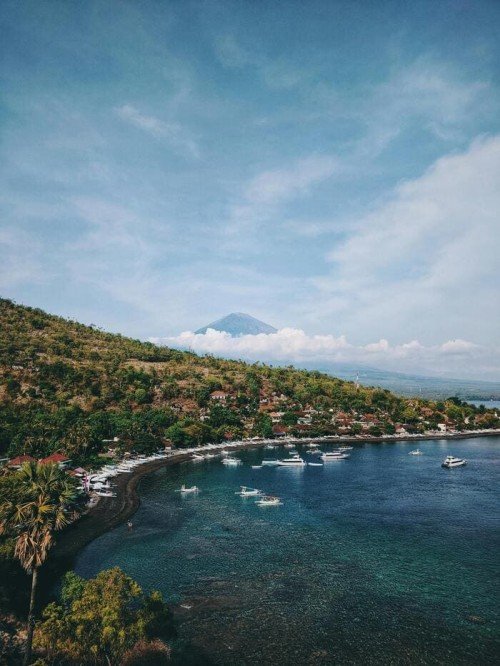
Bali is often called the Island of the Gods — but beyond the postcards, luxury resorts, and sun-kissed beaches, there lies another side to the island that many travelers never see. The hidden beauty of Bali isn’t only in its temples or rice terraces, but in the everyday rhythm of its people, its sacred traditions, and the harmony between humans and nature. To truly uncover Bali is to step off the main road, slow down, and let the island reveal itself layer by layer.
The Soul of the Island
Every journey through Bali begins with sound — the hum of motorbikes, the whisper of incense smoke, the soft clang of temple bells. These are the island’s heartbeats. Life here moves at a unique pace, defined by devotion and gratitude. Every morning, locals place canang sari offerings made of flowers and palm leaves at doorsteps, altars, and even car dashboards. It’s a ritual so simple yet so profound — a daily act of balance between the seen and the unseen.
This balance is what shapes Balinese culture. Temples rise beside beaches; ceremonies fill the streets with color and song; and even in the most modern café, the gentle hum of tradition is never far away. It’s this combination of spirituality and simplicity that gives Bali its soul — something no photograph can fully capture.
Beyond the Beaches
The Bali most tourists know is a narrow strip of coast — Seminyak, Kuta, Canggu — where surfboards, smoothies, and sunsets dominate the scene. But the real beauty unfolds when you venture inland. Drive toward Ubud and you’ll find a world of emerald-green terraces cascading down the hillsides. Wander through Sidemen, a hidden valley where farmers plant rice by hand as their ancestors did centuries ago.
For the adventurous, there’s Mount Batur, where sunrise treks reward hikers with golden light spilling over volcanic clouds. In the north, Lovina offers calm waters and black-sand beaches, while in the east, Amed is a diver’s paradise — a place where shipwrecks and coral gardens coexist under crystalline waves.
Every part of Bali has its rhythm, its own quiet beauty waiting for those who take time to listen.
The Power of Tradition and Art
Bali’s artistry is inseparable from its spirituality. Every carving, dance, and song has a purpose — to honor gods, ancestors, and community. Watch a barong performance, and you’ll witness good and evil locked in eternal dance. Visit a family compound, and you’ll find temples at its heart, symbolizing harmony between humans, nature, and the divine.
This devotion extends into daily life. Craftsmen in Mas carve wood so detailed it seems alive. In Celuk, goldsmiths shape precious metals with centuries-old skill. And in Batubulan, stone sculptures guard gateways and shrines, preserving myth through form.
Modern Bali: Connection and Creativity
While tradition runs deep, Bali is also a hub of creativity and innovation. Artists, designers, and entrepreneurs from around the world flock to the island not just for inspiration, but for collaboration. Coworking spaces in Ubud buzz with digital nomads building startups under bamboo roofs, and boutique brands showcase ethical fashion inspired by local craftsmanship.
This blend of heritage and modernity is what gives Bali its unique energy. It’s a place where old rituals meet new ideas — and where cultural connection drives creativity. In a way, the island itself mirrors the modern digital world: rich in diversity, connected across distances, and constantly evolving.
Many international companies, including marketing firms and startups, establish their creative hubs in Bali to reach global audiences. In this dynamic digital scene, even a link building agency can find unexpected inspiration — learning from the Balinese sense of community and balance. The same principles that sustain village cooperation and temple festivals apply to building networks online: trust, authenticity, and mutual growth.
The Harmony Between People and Planet
Bali’s beauty is fragile. The lush forests, coral reefs, and rice terraces depend on respect and sustainability. Fortunately, local communities are leading the way in eco-friendly tourism, organic farming, and waste reduction. Travelers can now stay in bamboo eco-lodges, volunteer in coral restoration projects, or support farmers practicing regenerative agriculture.
This conscious approach to travel is transforming Bali into a model for sustainable tourism — one that celebrates both people and planet. It’s not about seeing more, but about connecting deeply and leaving a positive mark.
The Language of Connection
What makes Bali truly magical isn’t just its scenery — it’s the way people connect. Whether it’s a smile from a street vendor, a conversation with a temple guardian, or an artist explaining their craft, communication here transcends language.
In the same way, businesses aiming to connect cultures must learn to communicate clearly and respectfully across borders. This is why digital firms, from content creators to a link building agency, thrive when they understand the art of connection — not just with algorithms, but with people. In Bali’s philosophy of harmony, there’s a valuable lesson for the global digital age: relationships matter more than reach.
Finding the Hidden Beauty
To uncover Bali’s hidden beauty, you must go beyond the postcard image. It’s in the quiet rain that falls over rice paddies at dusk, in the scent of clove and sandalwood that fills the temples, in the laughter of children flying kites under open skies. It’s the mix of peace and energy that makes every visitor feel part of something ancient and eternal.
Even amid modernization, Bali remains deeply rooted in balance. It reminds us that progress means little without soul — and that beauty isn’t only what we see, but what we feel.
The Island That Feels Alive
Bali isn’t a destination; it’s an experience that stays with you long after you’ve left. Its hidden beauty is found not just in the landscapes but in the connections it inspires — between cultures, generations, and hearts. When you stand on a cliff at sunset, listening to waves crash below, you realize that the true magic of Bali isn’t just in its temples or beaches, but in its spirit — timeless, alive, and endlessly giving.
